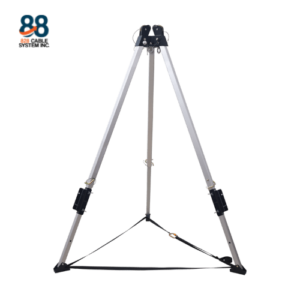
Essential Safety Practices for Working in Confined Spaces
When it comes to working in confined spaces, safety is paramount. Confined spaces, such as those found in cargo ships, industrial settings, and other environments, pose unique challenges that require strict adherence to safety protocols. These spaces, often characterized by limited access and poor ventilation, can present serious risks if not managed properly. In this blog, we’ll explore essential safety practices to ensure safe operations in confined spaces.
Understanding Confined Spaces
What is a Confined Space? Confined spaces are areas with limited access and egress, not designed for continuous occupancy. Common examples include boilers, pressure vessels, cargo tanks, and cargo holds. These spaces often lack adequate ventilation and can be hazardous if safety measures are not in place. Understanding the nature of confined spaces is the first step in managing the risks associated with them.
Risks and Hazards in Confined Spaces
Confined Space Hazards Working in confined spaces involves various hazards, including toxic gases, oxygen deficiency, and fire risks. Each type of confined space presents specific risks; for instance, fuel oil tanks may have explosive atmospheres, while cargo holds can have poor air quality. Identifying these hazards is crucial to implementing effective safety measures.
Preventative Measures and Safety Controls
Confined Space Safety Measures Preventative measures are essential for mitigating risks in confined spaces. Key practices include ensuring proper ventilation to maintain air quality, continuous monitoring for hazardous gases, and controlling access to the space. Sound management controls, such as regular safety audits and hazard assessments, are also critical in preventing accidents.
Essential Personal Protective Equipment (PPE)
PPE for Confined Spaces Personal protective equipment (PPE) is a last line of defense in confined spaces. Essential PPE includes respirators to protect against harmful gases, protective suits to prevent exposure to contaminants, and gloves for physical protection. Selecting the appropriate PPE depends on the specific hazards present in the confined space and should be based on a thorough risk assessment.
Training and Preparedness
Confined Space Training Proper training is vital for ensuring safety in confined spaces. Workers should be trained in confined space entry procedures, emergency response, and the use of safety equipment. Training programs should be comprehensive and include practical drills to prepare workers for real-life scenarios.
Emergency Procedures and Response
Confined Space Emergency Response In the event of an emergency, having a clear response plan is crucial. Emergency procedures should include steps for safe evacuation, communication protocols, and rescue operations. Regular drills and updates to the emergency plan help ensure that workers are prepared for any situation that may arise.
Compliance and Regulations
Confined Space Regulations Adhering to regulations and standards is essential for legal and safety compliance. Regulations from organizations like OSHA outline the requirements for confined space work, including hazard assessments, PPE use, and emergency preparedness. Ensuring compliance with these regulations helps protect workers and avoid legal issues.
Takeaway
Safe Work Practices Confined Spaces Prioritizing safety in confined spaces involves understanding the unique risks, implementing preventative measures, providing appropriate PPE, and ensuring proper training and compliance. By following these essential safety practices, you can significantly reduce the risks associated with confined space work and maintain a safer working environment.
